Introduction:
Within seven months, Kentucky’s arts communities experienced two federally declared disaster events. On the evening of December 10, 2021, 18 reported tornadoes swept through Western Kentucky. One tornado tracked across 11 counties and was deemed one of the longest in US history. Then, in late July 2022, days of rainfall led to a thousand-year flood that devastated the Eastern Kentucky region.
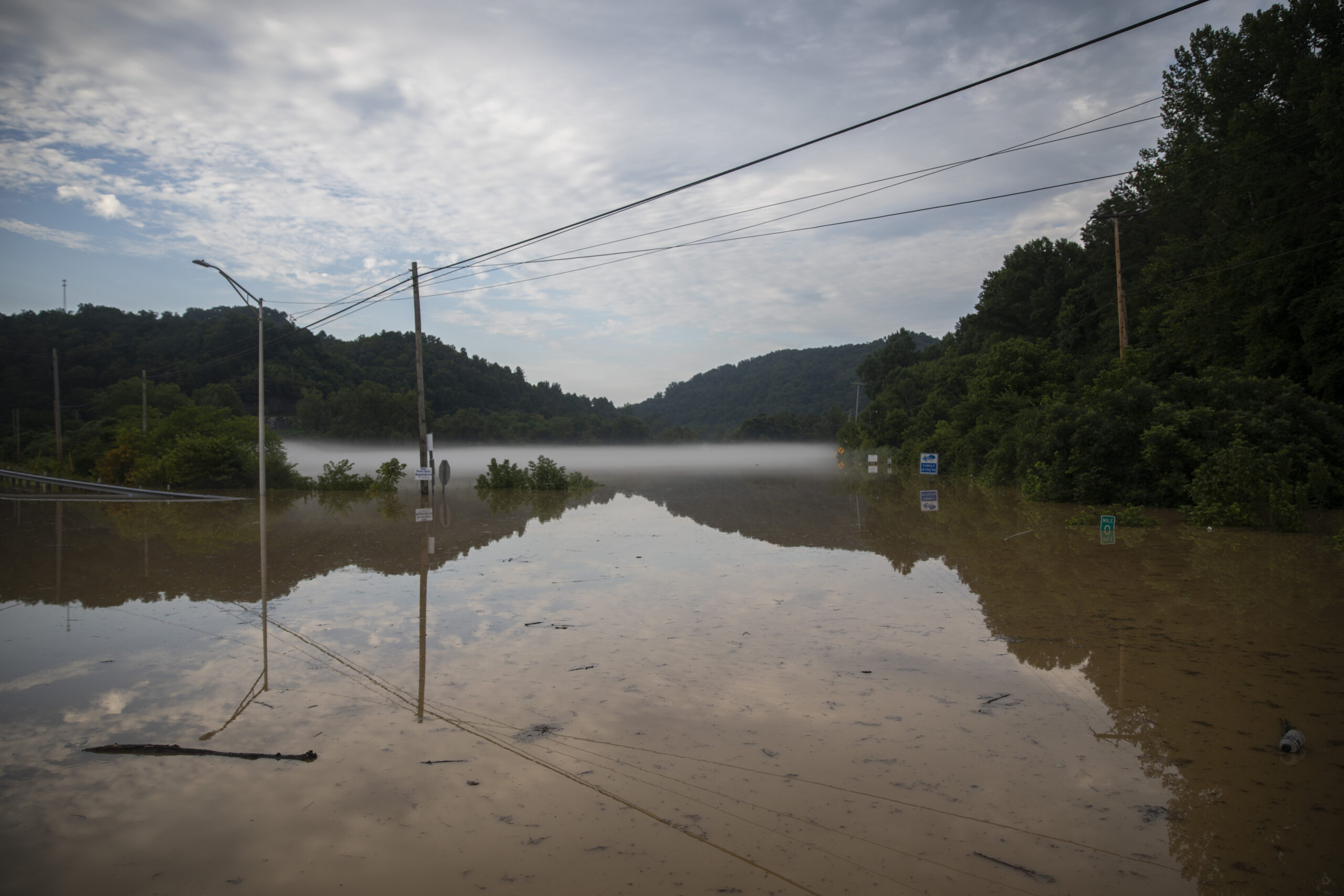
Credit: Eastern Kentucky Flooding (Arden Barnes 2022)
Both events were well documented in the media, but there was a desire to know more about how these events specifically affected arts communities within the state. With support from SouthArts, the Kentucky Arts Council and the University of Kentucky’s Arts Administration Department, first-hand stories and data from affected Kentucky arts communities were collected to better understand the arts sector's unique challenges and needs in the wake of the extreme events.
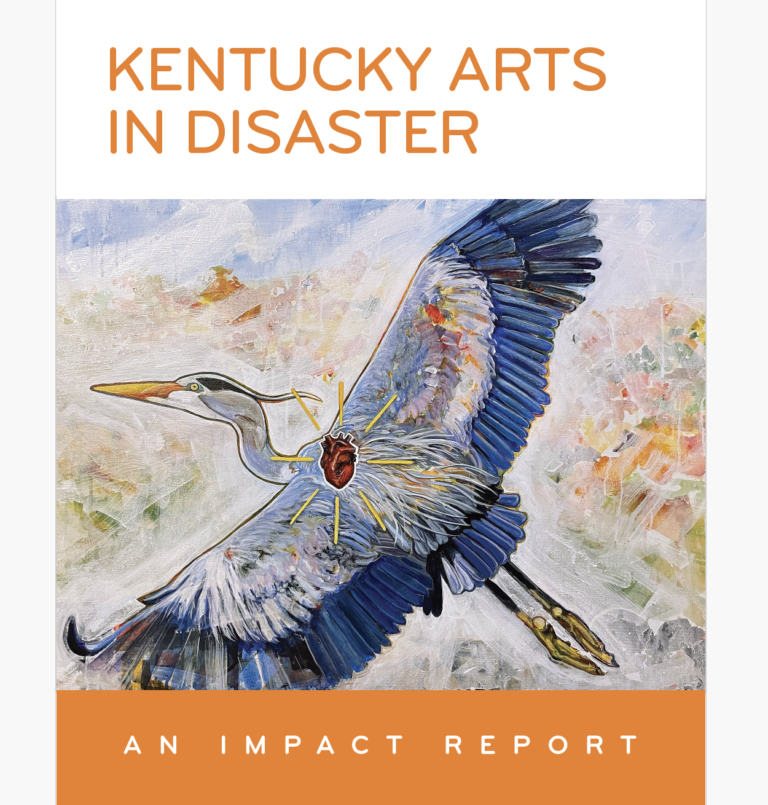
Cover of Kentucky Arts in Disaster Report (Cover Artwork by Kentucky Artist, Lacy Hale)
The findings were released this Fall in the Kentucky Arts in Disaster: An Impact Report that reveals the financial, logistical and mental health impacts of the disasters on artists and arts managers. The report also highlights the formation of KHERN, Kentucky’s Heritage Emergency Response Network, which is working to harness local knowledge and better coordination of contacts so that disaster assistance can arrive faster to artists and arts organizations in need.
Key Report Findings:
- Less than 1% of FEMA disaster public assistance aid for the two disaster events went directly to Kentucky arts and culture nonprofit organizations. Based on available data from FEMA Public Assistance requests, a mere .8% of eligible requests from the two disaster events were from arts and culture nonprofit organizations. While it is noted that some municipal requests for aid may have included affiliated arts and culture organizations, this finding points to three needs:
- Federal and state emergency management agencies need resources and data about arts and culture organizations to best contact and work with them in times of disaster, particularly to connect them to assistance opportunities before deadlines are passed.
- Artists and arts organizations need more assistance navigating the ever-evolving disaster assistance landscape.
- Funders need more refined eligibility policies that recognize the unique business operations of self-employed artists and nonprofit arts organizations.
- There was a median financial loss of $10,000 for reporting individual artists and $30,000 for reporting arts organizations, with losses ranging up to $5.5 million. In the immediate aftermath of the two disasters, artists and arts organizations primarily needed financial assistance to help cover a 3- to 6-month critical time period in which they were not operating, either due to mental or physical trauma, facility/equipment damage, canceled shows or work contracts, or lost inventory/projected sales/works-in-progress.
- A continuum of care is needed for artists and staff of arts organizations affected by disasters. Artists and arts managers found creating or producing art in the immediate aftermath of disaster events difficult due to navigating tragic losses while also maintaining the operations of their businesses.
- Most Kentucky artists and arts organizations did not submit insurance claims to assist in their relief needs. 77% of responding artists and 75% of arts organizations did not submit or were not aware of submitting insurance claims after the disasters. Of those artists and arts organizations that did submit insurance claims, 100% of the claims were accepted.
- Strong social networks helped connect artists and arts organizations with critical resources needed in response and recovery. Artists and organizations with strong, pre-established networks of support received more support more quickly. Additionally, social media was a prominent communication method for immediate and short-term assistance needs.
Real Stories of Loss and Resilience
The report took a closer look at a variety of arts organizations, from larger organizations with national ties, like Appalshop in Whitesburg, Kentucky, to the smaller community-based organizations like the Purchase Players in Mayfield, Kentucky.
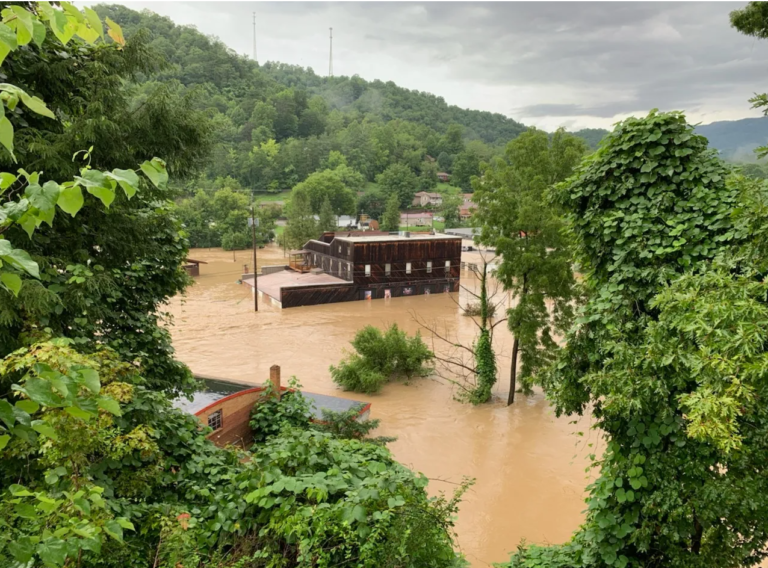
Credit: Appalshop’s Madison Street Building in Floodwaters (Appalshop 2022)
Appalshop faced significant damage in the 2022 floods, with much of its archive submerged under eight feet of water. For Appalshop, support from FEMA and the Smithsonian’s Cultural Rescue Initiative (see HENTF) was instrumental in salvaging irreplaceable cultural artifacts. Smaller organizations were also deeply affected but didn’t have direct access to such national social networks. For example, Booneville, Kentucky’s Community Theater Group, which had been working on an original play, "Inconvenient Dreams," had to cancel its run of the show. The theater, like many others in Kentucky’s performing arts community, lost income from projected ticket sales and sponsorships, delaying its productions and plans for facility renovations. Show cancellations of the Booneville troupe, as well as the Purchase Players in Mayfield and The Public Theater of Kentucky, demonstrated how even smaller-scale arts initiatives face unique, often nationally underreported setbacks during extreme events.
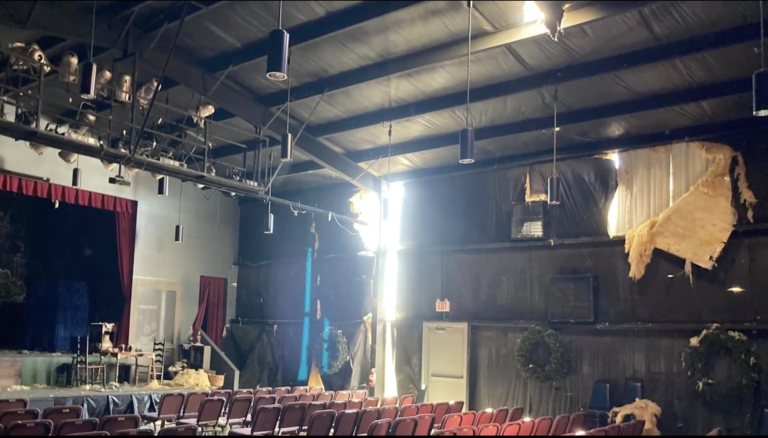
Credit: Purchase Players Community Performing Arts Center (CPAC), Tornado Damage from Inside Theater (Facebook 2022)
Financial Losses and the Path to Recovery
The report highlights a median financial loss of $10,000 for individual artists and $30,000 for organizations, with losses ranging up to $5.5 million. In a field where most arts businesses are small businesses or solo practitioners, such losses can be devastating. Many artists and organizations were already working within tight margins, and the disasters forced permanent closures of some community events and facilities. While some charitable funds for artists and arts organizations were available after the disaster, much of the typical financial support for arts communities was directed or redirected to broader community efforts addressing humanitarian needs. For example, the Ice House Gallery, operated by the Mayfield-Graves County Art Guild in Mayfield, Kentucky, was deemed a total loss after the 2021 tornado, and it took nearly two years for the guild to find and afford a new permanent home, leaving the name “Ice House Gallery” behind. Also, two years after the flooding, elevators that were damaged or destroyed in arts facilities in Eastern Kentucky still haven’t been repaired due to high costs and few resources to cover such an expense, causing issues with meeting ADA compliance.
Challenges with Federal Disaster Assistance
One of the more striking findings was the difficulty that Kentucky artists and arts organizations faced in accessing federal assistance. The report revealed that less than 1% of FEMA disaster assistance aid from the two disaster events went directly to arts and culture nonprofit organizations. The hurdles — like applying for a small business loan before being eligible for FEMA aid, delays caused by strict deadlines, or financial needs not meeting eligibility requirements — were identified. (While the specialized needs of artists and their tools, such as kilns and musical instruments, were deemed ineligible for recovery aid during the Kentucky disasters, FEMA has revisited those policies and now includes artistic tools as eligible equipment for assistance. This change demonstrates the power of well-documented, research-driven advocacy from over 20+ years, thanks to CERF+ and NCAPER!)
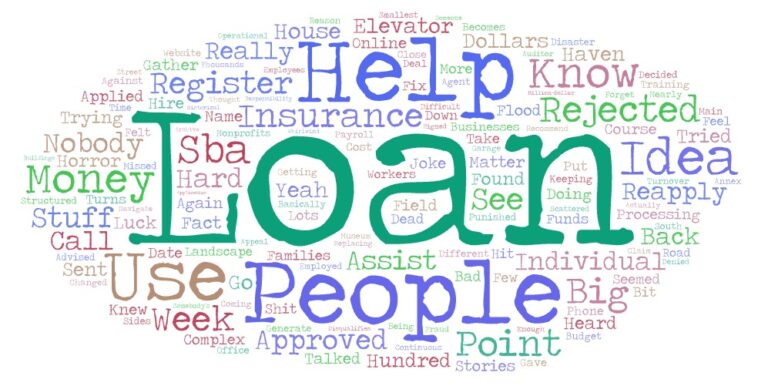
Credit: Generated Word Cloud based on responses from interviews and focus groups about working with FEMA in the aftermath of the disaster events (Kentucky Arts in Disaster: An Impact Report 2024)
Mental Health in Recovery
The report helped uncover how the trauma of losing creative spaces and work can deeply affect artists' and arts managers’ mental health. For some, the experience of loss led to a prolonged period of artists, including musicians, visual artists, craftspeople and writers, questioning their artistic purpose. Others, like arts managers and teaching artists, assumed unexpected roles, providing food, shelter and emotional support to community members who were impacted. The report highlights a 3- to 6-month gap in an artist or organization’s ability to create or produce work again, either due to mental or physical trauma from the disaster, canceled employment or postponed work contracts or commissions. Mental health resources for and by artists and arts workers would help ensure that those offering community arts recovery programming are also supported.
The Founding of KHERN: Kentucky’s New Resource for Rapid Arts and Culture Response
After the flooding in Eastern Kentucky in July 2022, a weekly Eastern Kentucky Archives and Collections Recovery Meeting Zoom call was held with local, regional and national arts partners. (For the full list of partners, view the history of KHERN.) These meetings resulted in the idea of a state-wide cultural response network for the Commonwealth. The Kentucky Heritage Emergency Response Network, or KHERN — a play on the “Kentucky Colonel,” an honor bestowed by the state’s governor — was born.
A critical aspect of KHERN’s development has been the lead role of the University of Kentucky’s Cooperative Extension Service, Arts Administration Department and Libraries, all of which have committed staff and faculty to providing sustainable leadership and resources toward the effort. With this leadership infrastructure in place, KHERN was able to apply for and receive a $25,000 Performing Arts Readiness (PAR) Project network development grant in October 2023. With support from this grant, the network has finalized KHERN’s governance structure, which includes three leadership levels that comprise the network's core: an advisory committee, a steering committee and network administrators. Additionally, KHERN has developed a website and a Facebook page, which are used to provide information on available emergency response resources, how to contact KHERN in an emergency, and the network’s mission and history.
The PAR network grant also supported a day-long conference and regional training workshop dedicated to disaster planning and training. On Friday, September 6, 2024, the Arts Disaster & Crisis Preparedness Conference was held on the University of Kentucky’s campus to exchange best practices in emergency preparedness within and between the arts and culture and emergency management sectors. The conference welcomed over 100 attendees and featured presenters from leading agencies and voices in disaster management and arts administration, including FEMA/HENTF, the National Weather Service, the National Endowment for the Arts, the National Coalition for Arts Preparedness and Response, and the Performing Arts Readiness Project, as well as local and regional arts and culture readiness advocates from the Appalachian Arts Alliance, Kentucky Department of Libraries and Archives, and Kentucky Historical Society.
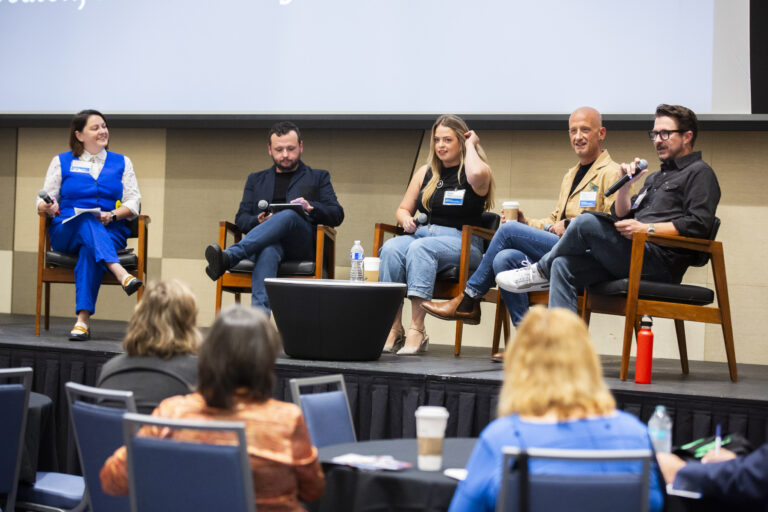
Credit: Morning Keynote Session Panel “Place-Making and Social Infrastructure: The Hazard Story” at the Arts Disaster and Crisis Preparedness Conference, September 2024 (Arden Barnes 2024)
The following day, KHERN co-hosted a regionally focused workshop at the Boone County Enrichment Center in Burlington, Kentucky, with the University of Kentucky Cooperative Extension. The training included similar speakers and workshops from the conference but was catered toward extension agents and Northern Kentucky and Cincinnati-based arts and culture organizations.
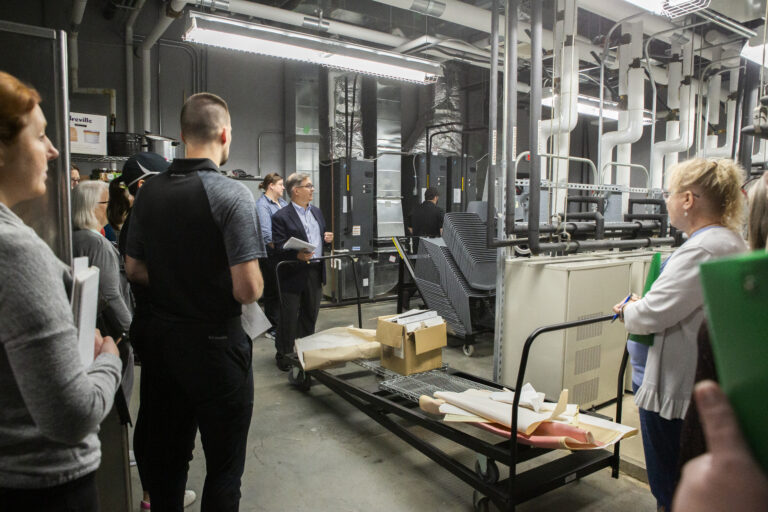
Credit: Performing Arts Readiness Director, Tom Clareson, leads Boone County Arts and Culture Disaster Planning Workshop participants through an on-site risk assessment (Arden Barnes 2024)
KHERN’s administrators have also hosted informational meetings with Kentucky’s Association of Emergency Managers (KEMA) and with the developers of the State of Kentucky’s new Disaster Recovery Framework (KDRF). The feedback from these planners and emergency managers has been resoundingly positive. There is real interest in the emergency management community to understand more about the work we do in the arts and how we can work together to create more resilient and prepared communities.
Conclusion
KHERN is delighted to join the growing list of arts and cultural response networks across the nation that have formalized to activate and provide assistance before, during and after disaster events. In the coming months and next year, KHERN will build the network’s general membership and hold more regional training and workshops throughout the state, coming up next in Greenup County and the western region of the Commonwealth.
It is our hope that KHERN's recent launch, paired with the stories and data from the Impact Report, provides helpful insights on ways arts communities can prepare for, recover from and transform beyond extreme event situations. KHERN is guided by the belief that fostering local knowledge and establishing a rapid-response framework will help Kentucky artists and arts organizations in the future. The network’s activation protocol hasn’t been tested yet, but the recent path of Hurricane Helene that struck many of our neighbors to the south was a stark reminder that it could happen again soon.
Author Bios
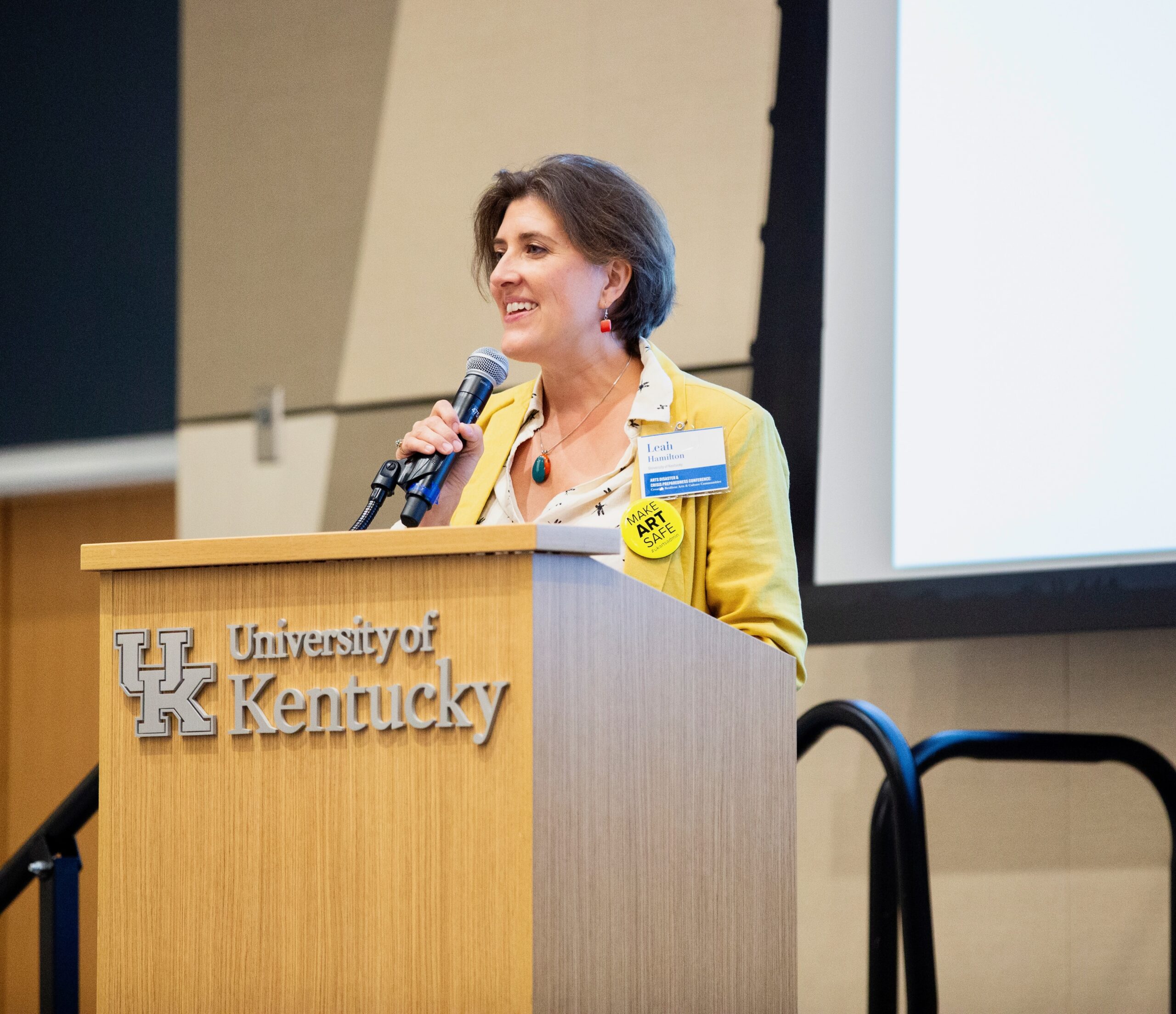
Leah Hamilton at Arts Disaster and Crisis Preparedness Conference, September 2024 (Source: Arden Barnes)
Leah Hamilton is a former arts executive and Assistant Professor of Arts Administration at the University of Kentucky, where she teaches courses and is the director of the Arts Emergency Management certificate program. Hamilton serves as the lead administrator for KHERN (Kentucky Heritage Emergency Response Network) and is a Crisis Analysis and Mitigation Coach for NCAPER (National Coalition for Arts Preparedness and Emergency Response). She is currently working on an NEA grant-funded project in Kentucky focusing on mitigation and disaster preparedness strategies in the arts.
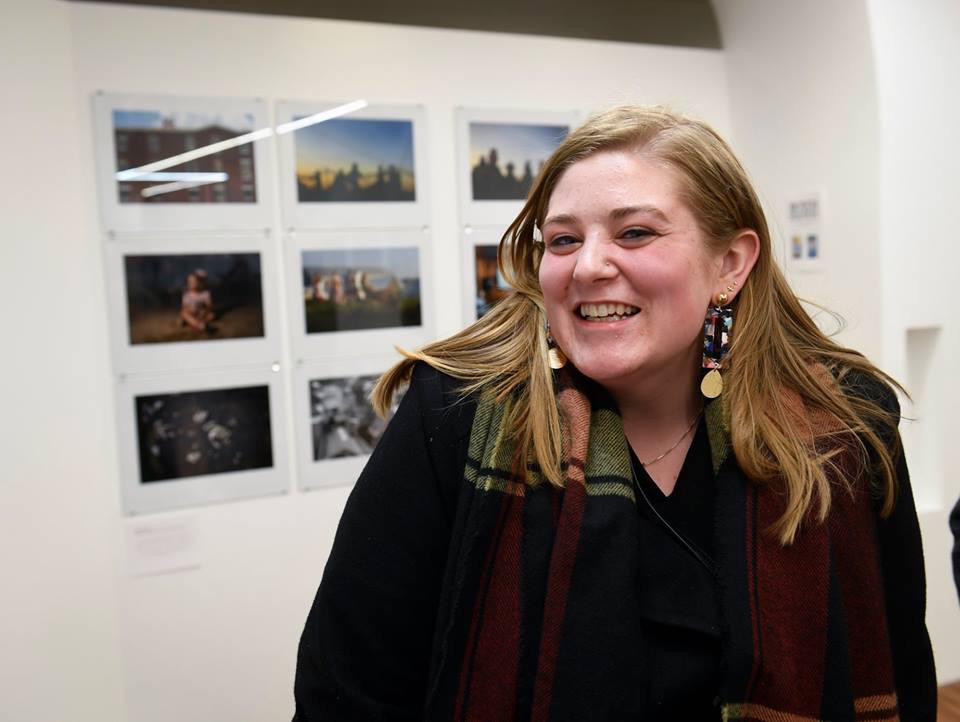
Arden Barnes at Ki Smith Gallery in New York City, March 2019 (Source: Jack Gruber)
Arden Barnes works as a photojournalist based in Central Kentucky and holds an MA in Arts Administration from the University of Kentucky. During her graduate coursework, she completed the 15-week Arts Emergency Management course offered as part of UK’s MA Arts Administration program curriculum. Barnes serves as the Network Coordinator for KHERN and has a dedicated interest in arts and emergency management.
